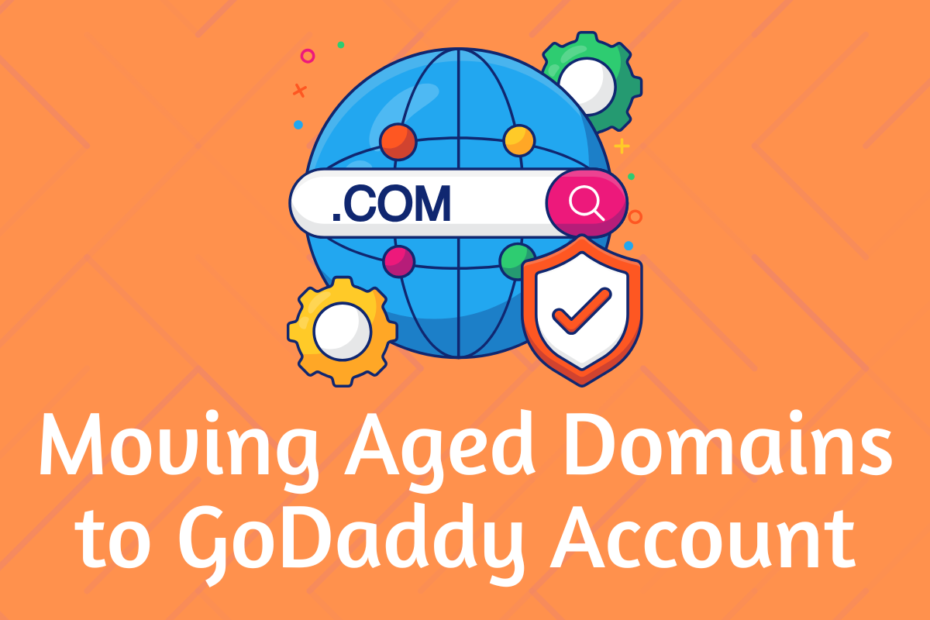Transferring aged domain names to your GoDaddy account can provide numerous advantages, from leveraging domain authority to optimizing search engine visibility. Understanding the step-by-step process to securely transfer aged domains, along with knowing the strategic benefits they offer, can position you to unlock growth opportunities for your online presence. Below, we provide a comprehensive guide on transferring aged domains, the benefits of acquiring them, and tips for selecting the right domains that align with your digital goals.
What Is an Aged Domain and Why Should You Consider One?
An aged domain is a previously registered web domain that has been in use for a certain number of years. Such domains come with pre-established authority, making them valuable assets for SEO and online brand positioning. Domains with several years of history often come with backlinks, a search reputation, and sometimes residual traffic. Here are several reasons to consider aged domains for your GoDaddy account:
- Established Authority: Older domains are generally perceived as more trustworthy by search engines, making it easier to rank higher.
- Residual Traffic: Domains with previous content and links might still attract organic traffic.
- Backlink Profile: Established backlinks can support quicker SEO results.
- Cost Efficiency: Aged domains can offer a jumpstart in SEO and branding, often making them more valuable than new domains.
Key Benefits of Transferring Aged Domains to GoDaddy
GoDaddy, a leading domain registrar, offers features and services that support the use of aged domains, including easy transfer processes, secure DNS management, and robust customer support. Here are the core benefits of using GoDaddy for aged domains:
- Seamless Transfer and Setup: GoDaddy offers tools that simplify the domain transfer process, whether it’s an external or internal transfer.
- User-Friendly Management Interface: GoDaddy’s dashboard is intuitive, allowing you to manage DNS settings, email forwarding, and renewals easily.
- Enhanced Security: GoDaddy includes features like two-factor authentication and domain locking, which provide added layers of protection.
- Flexible Pricing Plans: With GoDaddy, users can access affordable pricing for domain renewals, premium support, and other necessary tools.
Step-by-Step Guide to Transferring an Aged Domain to Your GoDaddy Account
Below is a detailed, step-by-step guide to transfer an aged domain name to your GoDaddy account successfully:
1. Unlock the Domain and Get an Authorization Code
- Log into Your Current Registrar: Go to the current registrar where the aged domain is registered.
- Unlock the Domain: Find the domain’s lock settings and disable it, making it eligible for transfer.
- Request an Authorization Code (EPP): This code, provided by the registrar, is essential for the transfer. Some registrars may send this to your registered email.
2. Initiate Transfer in GoDaddy
- Log into Your GoDaddy Account: Access your account to begin the transfer process.
- Enter the Domain Name: Type in the domain you wish to transfer under the “Domain Transfer” section.
- Provide the Authorization Code: Enter the code you received from the current registrar. GoDaddy will prompt you to enter this to validate the transfer.
3. Review Domain Settings
- Verify Contact Details: Ensure that the domain’s contact information matches your GoDaddy account details.
- Select Renewal Preferences: Choose whether you’d like to auto-renew the domain or manage it manually.
4. Pay for the Transfer Fee
- Complete Payment: GoDaddy may require a transfer fee, which usually includes a one-year domain extension.
- Finalize the Transfer: Confirm the transfer details and complete the payment.
5. Confirm the Transfer
- Monitor Your Email: Look for emails from both GoDaddy and your current registrar, confirming the transfer.
- Wait for the Transfer to Complete: This process can take anywhere from a few hours to a week. GoDaddy will notify you once the transfer is successful.
Criteria for Selecting Quality Aged Domains
When selecting aged domains, consider the following critical factors to maximize your investment:
- Clean Backlink Profile: Look for domains with quality backlinks from reputable websites. Avoid those with links from spammy sites.
- History and Reputation: Verify that the domain has no negative association, such as penalties or blacklisting by search engines.
- Keyword Relevance: Domains that include relevant keywords can support SEO for specific industries or topics.
- Traffic Metrics: Consider aged domains that still generate organic traffic, as this can improve your site’s visibility from day one.
Common Challenges in Aged Domain Transfers and Solutions
Even with GoDaddy’s streamlined services, there may be challenges when transferring aged domains. Here are common issues and ways to overcome them:
- Expired Authorization Code: Authorization codes may expire within days. If this happens, request a new one from your current registrar.
- Registrar-Specific Policies: Different registrars have different requirements. Research each registrar’s rules to avoid delays.
- Domain Locking Issues: Sometimes domains are locked automatically after a failed transfer. Be sure to unlock it and follow all confirmation steps precisely.
Conclusion
Transferring an aged domain to your GoDaddy account is a powerful strategy to improve SEO and accelerate online growth. By selecting a quality aged domain and following these detailed transfer steps, you can ensure a seamless integration into GoDaddy’s platform. With the added benefits of domain authority, established backlinks, and GoDaddy’s robust features, aged domains provide a unique opportunity to build a stronger digital presence.
